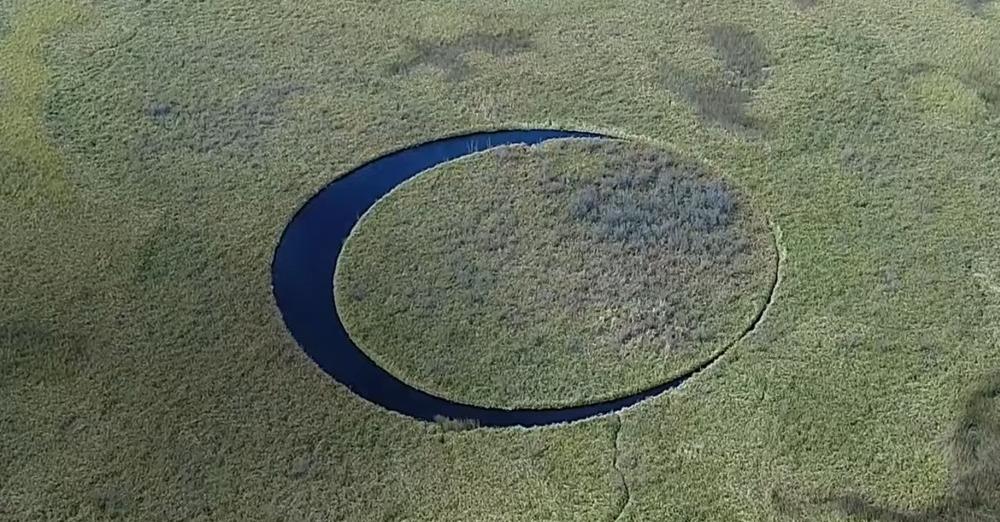The Enigma of the Circular Floating Island in Argentina
The Enigma of the Circular Floating Island in Argentina
In the dense Paraná Delta of northeastern Argentina lies a remarkable natural phenomenon: a near-perfect circular floating island known as “The Eye.” This intriguing landmass not only floats but also rotates continually, presenting an enigma that has fascinated scientists, explorers, and the curious-minded.

Geographical and Physical Characteristics
The Eye is located in a swampy area near the Paraná River. It measures approximately 120 meters in diameter and is encircled by a thin water channel, enhancing its distinct circular appearance. The surrounding water body creates a natural moat, making the island look like a pupil in an eye when viewed from above. The island’s unique movement has been captured through satellite images over time, showcasing its slow but consistent rotation.
Theories and Explanations
Several theories have been proposed to explain the formation and movement of The Eye. One popular hypothesis is that the island is a floating mat of vegetation, a common occurrence in wetland ecosystems. These mats form when dense vegetation growth on the water surface becomes buoyant, detaching from the bottom and floating freely. The circular shape could result from the natural expansion and contraction of the vegetation mat, shaped by water currents and wind.
The rotation, on the other hand, remains a topic of speculation. Some scientists suggest that the island’s movement could be driven by the uneven growth of vegetation, wind patterns, or subtle water currents in the surrounding channel. The consistent rotation could also be influenced by the Coriolis effect, although this is less likely given the small scale of the phenomenon.
VDO
Scientific and Cultural Impact
The Eye has attracted significant scientific interest due to its unusual characteristics. Researchers are keen to study its ecology, formation, and the factors driving its movement. The island’s isolation and unique environment may harbor distinctive plant and animal species, making it a potential hotspot for biodiversity research.
Beyond scientific curiosity, The Eye has captured the public imagination, leading to various cultural interpretations and myths. Some local legends speak of the island as a mystical place with supernatural properties, adding to its allure. The Eye’s enigmatic nature has also inspired filmmakers and artists, contributing to its mystique and notoriety.
Conclusion
The Circular Floating Island in Argentina, known as The Eye, remains a captivating natural wonder. Its perfect shape, constant rotation, and the mystery surrounding its existence continue to intrigue and inspire. As research progresses, we may uncover more about this floating enigma, enhancing our understanding of the natural world and its many marvels.